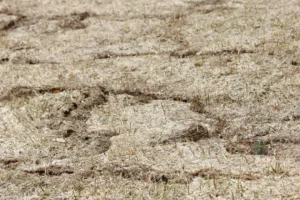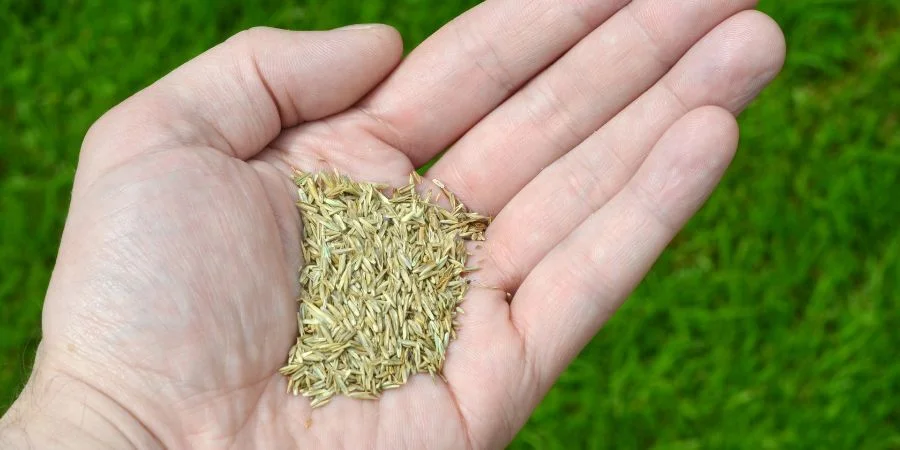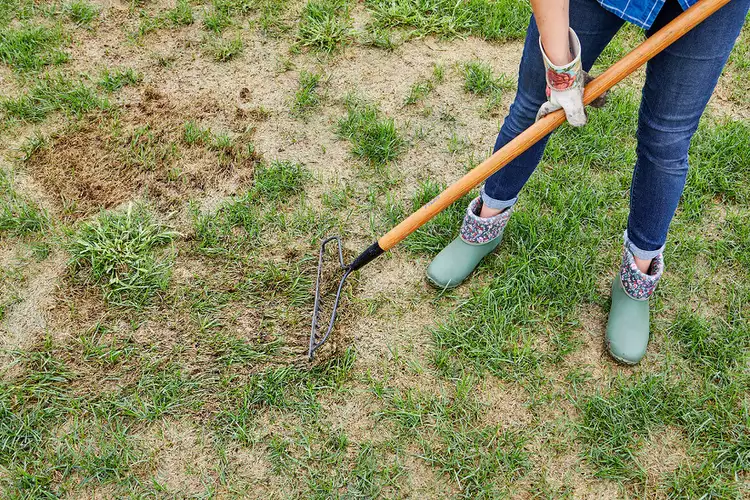Does Winter Kill the Grass? Common Things That Can Damage Your Lawn in Winter and How to Deal with It
Last Updated on January 14, 2025 by Duncan
Your lawn has plenty of things that can damage it in winter. These things include:
Voles
Voles dig beneath the snow and munch on turfgrass. They are active all winter, digging through the grass where it is warm beneath the snow.
Voles leave a network of crisscrossing trails behind, which you can see as the snow melts.
While there is some damage on the grass, their effects rarely last. To hide the traces, rake up all the dead grass, and the lawn will regrow and fill in the damaged places on its own.
This may take some time, so use some seed and cover it with dirt to speed things up once the growing season starts.
You can also use traps baited with peanut butter, rolled oats, or peanuts. You should place the baits in PVC pipes stretched horizontally along the ground to protect pets and children.
Vole repellents containing the active ingredient castor oil are recommended by the University of Kentucky.
You might be tempted to use poison to kill the voles, but don’t. This is because the poison can kill other animals, especially birds (such as owls, which feed on voles). Your pets (cats and dogs) can feed on the poisoned voles, and they die.
It’s also meaningless. With voles, there is no such thing as one yard. Look around your neighborhood; everyone most likely has the same problem.
Even if you successfully eliminated yours, others would simply move in to fill the void.
This is a problem that you must learn to live with. Patch the grass in the spring, and don’t bother about it the rest of the year. It’s not that big of a deal.
You can reduce vole damage by keeping your lawns mowed and cleaning up any leaves that might be there.
When their food and cover are scarce, they have no reason to come to your lawn. They are also vulnerable to predators who prey on them.
Salt damage
If you are wondering, does salt ruin a lawn? Yes, it does. Salt is a powerful drying agent, so many people use it to melt ice.
As it melts through the snow and ice, it ends up in your lawn, seeping into the earth and drying up roots.
Depending on the degree of the salt damage, your lawn may be able to recover fast — but in most cases, the damage will result in brown areas of dead grass.
In most cases, you must reseed these areas to have the green, healthy grass you are after.
If you are looking to protect your grass from damage in the first place, there are several things you can do. These things include:
Cover up the grass: Cover the borders of your grass with burlap sacks or landscaping cloth from your local hardware store or nursery. This will protect the most vulnerable portions of your yard from salt damage.
Shovel the snow: Shoveling snow from your driveway and walkways keeps it from freezing and allows you to remove snow without using dangerous chemicals.
If you are out of town or absent for a few days, move shoveled snow away from your grass, as the remaining salt may undo your efforts.
Use less toxic salts: Although rock salt, also known as sodium chloride, is the most commonly used salt for melting snow and ice, other ways exist to improve your traction on the road.
The least hazardous alternative to rock salt is CMA (calcium and magnesium acetate). Unfortunately, it is expensive. If you don’t have the budget, use sand or cat litter, as they are both effective and not as expensive.
Snow mold
When heavy snow falls on unfrozen ground, the damp nature of the surface can develop a range of fungal diseases.
As the snow melts in the spring, you may observe fuzzy or crusty patches (pink or gray in hue) covering parts of your yard.
Snow mold normally dies as the sun and breezes dry up the lawn, but the grass may die if the turf has been contaminated for an extended period. Thankfully, in most situations, grasses recover on their own.
Snow mold is often not a concern unless there is 45 days or more of continuous snow cover during the winter.
You should be fine if you get less than 45 days of snow cover. In most cases, snow mold could become a concern if there is more than 60 days of continuous snow cover.
To lessen the likelihood of snow mold, there are several things you can do. These things include:
Lower your cut height: You should lower the cut height of your lawn as low as you can without scalping your grass in the final few weeks before top growth ends.
A good way to about it is to keep your grass no more than 2.25″.
You also should avoid using a lot of potassium on your grass. This is because high potassium levels have been linked to an increase in snow mold, and you don’t want this, do you?
If you’ve always had problems with snow mold, you might want to look into preventative fungicide sprays.
You also should rake up any debris left over from the previous year’s lawn to improve air circulation. To avoid snow mold, de-thatch or aerate your lawn regularly to allow the grass to air and dry.
Some experts advise against late-season lawn fertilization because unabsorbed nutrients may promote mold growth when snow covers the ground while it is still warm.
Can you protect your lawn from winter damage?
The good news is that you can prevent winter damage by properly preparing your lawn for the cold weather.
To help you out, here is a guide we prepared on how to prepare your lawn for winter.
If you have always had issues with your lawn, following the above guide might not be enough in most cases.
In such an instance, you should work closely with a professional partner.
The partner will ensure aeration and overseeding in the fall to promote growth and a fuller yard.
Give expert advice on how to effectively support the health of your yard.
Ensure you have access to a wider range of equipment and tools without buying them.
Ensure that you use professionally curated fertilizer treatments.
Overall, the expert helps in safeguarding your grass and improves its appearance over time, so you’re safe even when the weather turns bad.



